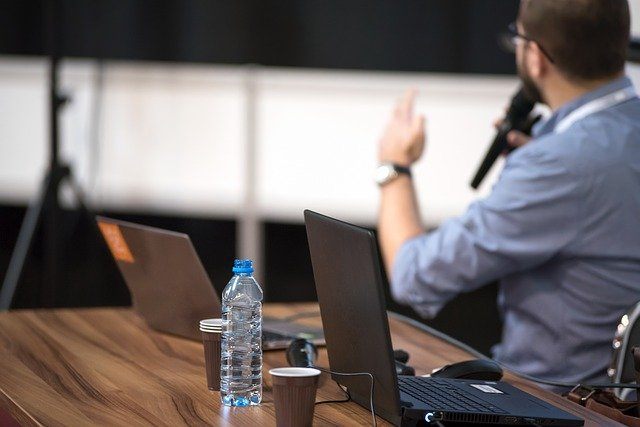The Key to Teaching Science

In your early school years, think back to learning about science. What discoveries stand out? What got you excited, or did you shut down? What gave you more inspiration to learn?
I also use these questions with administrators, tutors, and teachers to initiate professional training. Some have incredibly detailed memories of school involvement with science, from playing with beetles to launching model rockets. But just as many recall reading boring textbooks and reacting to questions from homework assignments.
Teaching Science is Not Easy
The lesson from these personal stories is clear: good teaching is important, and teaching science well is difficult. Planning engaging lessons, navigating tricky science concepts, anticipating and dealing with the preconceptions and misconceptions of students, and making tough decisions on the fly are needed for a successful science lesson. Good teaching is an art that is carried out by those with advanced skills and experience.
In several states, the introduction of new standards, such as the Next Generation Science Standards, adds more difficulty for students. These norms alter perceptions of how students study science and also introduce major changes to the curriculum and procedures of the classroom. According to a 2015 National Academy of Sciences survey, many science teachers still lack “sufficiently rich experience” with content in the science discipline they currently teach. This issue is particularly important both at the elementary level and in schools serving disproportionately low-income student populations. But the question is not limited to primary grades at all. Two out of every five high schools do not offer physics because they have no trained instructors.
Existing Standards
For all schools, the current Every Student Succeeds Act calls for top-notch science teachers. But how can we get to that place? Continual learning is the secret. And as much as the length, the quality of the continuing education matters every bit.
National Base of Science and the U.S. Significant research and development programs have been championed by the Department of Education to recognize how best to facilitate science learning for educators and students alike. The 2015 National Academy of Sciences study concludes that science teachers’ most successful professional learning focuses on content rather than just pedagogy; requires active learning; offers continuity through learning environments and with school, district, and state policies; has ample length to enable repeated practice and reflection on experiences in the classroom; and brings together telecom
It is important to consider the components of high-quality technical learning. Yet there is a lack of in-house experience in many districts and schools to ensure that educators are completely grounded in life, earth, and physical science. Many local education agencies have effectively collaborated with outside organizations to provide content expertise that complements in-house support from district educational mentors, lead instructors, and creators of employees to compensate for this shortfall.
How do we ensure that all students have access to science teachers who are well-trained and qualified? Commentary on Education Week asked teachers, professors, and educator-educators around the nation to weigh in on this pressing challenge. A grant from The Noyce Foundation funds this special portion. Education Week exercised sole editorial control over the content of this package; nevertheless, the views expressed are the owner of the authors.
Examples of Successful Programs
One professional-learning initiative, Making Sense of SCIENCE, has an established record of deepening teacher awareness, improving classroom practices, and substantially growing student achievement in science. This program is especially popular with non-profit educational organizations.
The secret sauce offers first-hand learning opportunities for teachers that are science-rich, cognitive, interactive, and fun-not unlike what we want for our students in K-12. In this way, many educators have never learned science, so reading a book, listening to a webinar, or attending a workshop is insufficient. Alternatively, educators profit from participating regularly in science activities, such as asking questions, collecting and reviewing knowledge, and engaging in scientific argumentation. We use written practice cases, similar to those used in business, medicine, and law, to facilitate peer-to-peer discussions about students and to improve the professional decision-making of teachers. Finally, as lifelong learners who are part of professional culture, we encourage educators to take responsibility for their learning and to build their identities.
Regional groups, such as county education offices or other intermediate agencies, and governments, for their part, may also engage in capacity building in science education. Michigan is taking such an approach already. Science representatives from 33 regions throughout the state are deployed by the Michigan Mathematics and Science Centers Network to provide educators with scientific professional growth, representing large urban districts like Detroit as well as more isolated rural counties in the north. Legislative funds are now being appropriated by several other states, including New Mexico and Texas, to train a network of science leaders who, in turn, provide quality science technical education at the local level.
Conclusions
It is worth this effort. Research shows that teachers who feel successful and encouraged in their work are more likely to remain in the profession, offering considerable fiscal benefits. Researcher Richard Ingersoll has estimated that the revolving teacher turnover door costs upwards of $2.2 billion a year for school districts. More significantly, our students deserve an exciting, unforgettable, high-quality science education that prepares them for college, career, and life. Ensuring that teachers have more advanced learning resources would go a long way towards making them understand these achievements.






